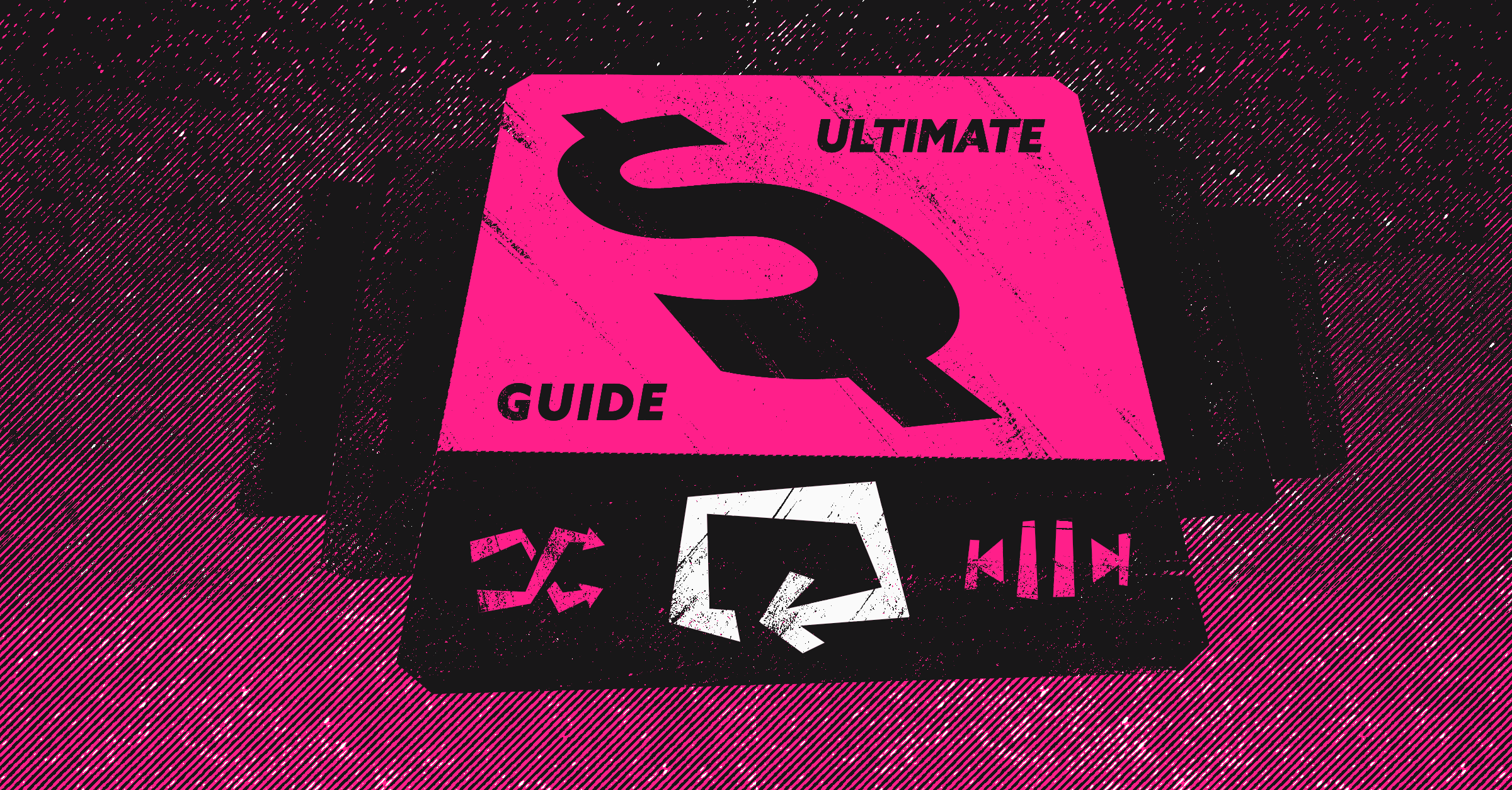
New RevOps leaders jump into their roles thinking, “I need to build a sales process.”
They see a CRM chuck-full of dirty data and a glaring lack of standardization across the current sales processes. Or worse, no sales process at all.
Their inner desire to organize and improve can put unnecessary pressure on themselves to build a process before they know the full scope of the problem. While well intentioned, this mindset sets the sales process and RevOps leader up to fail.
In reality, the customer and revenue team set the sales process. Experienced RevOps professionals listen, implement, and optimize based on their journeys.
So how do you develop a repeatable sales process for scaling and optimizing your funnel? We’ll cover that and more below.
What is an effective sales process?
Sales processes fail when they don’t put customers first. Many companies crash and burn trying to push their customers into an existing box, their box. Ideally, they already want to buy from you. You just have to nurture that.
Why you need a sales process framework
An effective sales process framework brings confidence and predictability to the organization, allowing the revenue team to better forecast and hit revenue goals on repeat. When that happens, everyone’s happy. Reps hit quota, managers hit their quarterly projections, and the CEO can deliver on promises to investors.
Without that, your revenue team gets stuck on the hamster wheel, and customer experience suffers. Prospects’ perception of your company — and their likelihood of closing — may vary based on the rep.
Understanding your buyer’s journey
The buyer journey and audience research should be the first step in developing your sales process.
If it isn’t, you’re building a process for you, not the customer. You’re relying too heavily on your own understanding of sales and what you believe it should look like. But sales processes are not one-size-fits-all. Otherwise, successful founders would never miss.
Buyer Personas: what you need to know
Honestly, the term “buyer persona” is too arbitrary. No one has a strong sense of what it actually means or even what it should include.
So you’ll see these fancy docs with a smiling face at the top and information such as “they work at X company, which has an MRR of X, and X number of employees.”
What you really want to focus on is the point of contact with the company. Learn everything about them.
Basic buyer persona template:
- Where they hang out online
- What kind of information they share on social
- Which sources of industry news they trust
- Who they interact with on social and their titles
- What questions they’ve posed
- Frustrations they’ve expressed
Yes, of course, you want to know the pains of the business, because that’s what they’re going to be looking to you to solve. But you have to know how to speak to that individual and understand their motivations.
What are the steps in a sales process?
Shay Lynch, a Business Performance Advisor at Future State Academy, states “I’ve worked with companies where up to 95% of their sales process didn’t lead to a sale. Of the 5% that did, only 3% was a valuable sale with a valuable client.”
Yet, these companies survive and even thrive. Imagine what would happen if improved on those processes.
Shay knows that improvement starts with building a sales process step by step.
Research your target audience
Research into your audience should always be the first step. While most companies don’t build their buyer personas based on actual people, this is where you can get ahead.
If you do your research on actual people, and build personas based on those people, you’re already a step into the process of an effective sales funnel.
Prospect like a Pro
There’s a difference between cold calling and targeted calling or prospecting. When you use a targeted approach, you already know who the prospect is. You’ve done enough preparation and research to know how to speak to them. You know they have a need for your product or service, and how to align with them.
What’s even better than a targeted prospect, is a warm or even hot prospect. To reach those, you have to develop a presence in front of them. They have to know your company and even your sales reps before you approach them.
How to schedule calls & book product demos
Okay, it’s a bit of a loaded question. There are a lot of ways to schedule calls and book demos.
But in general, if you’re reaching out to a targeted prospect, you already know how to speak to them. You understand their pains.
Booking an appointment or demo then comes down to using empathy in your sales rather than just a sales script.
It comes down to speaking like a real person, developing a connection rather than just trying to sell.
With a warm or hot lead, that lead may actually approach your team or individual sales reps (if you’re helping reps who want to build a personal brand on social platforms like LinkedIn, the likelihood of this is much greater).
Discovery call: mastering the sale presentation
A discovery call comes next in the sales process, and you really need to have that down.
The caveat in this, and how to really master it, is not making it so scripted. Use the language your prospects use in past discovery calls. Build sales playbooks around past objections, so you learn from every lost deal and always have the right answer when you need it.
Don’t talk about your features. Instead, focus on the unstated needs. The things your customers are struggling with beyond the features and prices. You have to understand what’s really holding them back and how to get around them.
Sales presentation strategies: how to sell your value
Again, too many salespeople focus on the features of their products or services. But when it comes to legitimately selling value, you’re not selling features. You’re selling painkillers.
The best sales conversation to have with your prospective leads
Say you ask them what’s holding them back, or you figure it out some other way. Instead of objection handling and selling them the features, you should focus on talking about the adoption of this software.
So the conversation you should have is the quiet needs. What will it cost them in terms of time, money, and effort? Those are the quiet conversations and questions they’ll be asking themselves. If you want a second meeting, go beyond features, fast.
Go through that process with them.
Qualifier questions to ask
Ideally, you won’t have to ask too many qualifying questions. By the time they get to you, they should already be fairly qualified. That said, no sales system is perfect. Some unqualified buyers will always slip through.
Here are some questions to see where prospects at in terms of buyer readiness:
- What solution are you using right now?
- What’s made you look for an alternate solution?
- What have you tried in the past, and why do you think it didn’t work?
- What are you hoping we can solve for you?
- Why is solving this problem a priority for you right now?
- What is your timeline?
- What is your budget?
- How soon do they expect results?
Recommended Reading: 30 Minutes to President’s Club’s Three Favorite Sales Templates
You don’t need to ask these questions verbatim. In fact, it’s better if you don’t. They should seem like normal parts of a whole conversation.
The vital importance of active listening
Call it active listening or call it empathy. Either way, your focus shouldn’t be on pushing your product. It should be delivering value the individual customer needs.
Why?
Trust impacts buying, simple as that. One way to develop trust with a buyer is by developing a relationship with them through active listening.
How to handle sales objections
Most companies have a sales playbook that tells reps how to handle sales objections. It’s usually some form of script they have to stick to.
But the way to handle them isn’t to throw a bunch of product knowledge at the customer and tell them why they’re wrong or tell them about a feature that can handle the situation.
This essentially strips the conversation of humanity. Instead, active listening (or empathy) can cue you into the real problem, and focusing on a human relationship and conversation can help salespeople get around those objections without actually trying.
Sales enablement content also boosts the ability to handle objections simply by existing.
When you have content at the ready, loaded with research and answers to direct questions that your prospect and your sales reps can use… you’re not only saying you understand their pains and withholdings but that you can meet them where they are.
That’s pretty much the entire premise of Dooly Playbooks. It calls forward any and all resources relevant to a conversation based on keywords the rep uses within their notes, in real-time.
Meaning, no one is ever guessing. Reps can give real, hard answers right away.
What to avoid to close the deal
There are quite a few words that have become so cliche and/or triggering that an audience completely shuts themselves off from the rest of the conversation. That’s never good in sales.
Some words to avoid in sales include:
- Discount
- Guarantee
- Commission
- Cheap
Recommended Reading: 10 Words to Avoid in Sales
Closing the deal effectively
Closing a deal doesn’t have to be complicated. Your prospect is looking for a solution and hopefully, you have that solution.
More than likely, they’ve already done their research into your features and benefits (81% of customers do). So skip that. They already know.
We mentioned before that talking to them as a human, rather than a scripted robot, and infusing empathy to develop a real relationship helps you close more deals.
Once you understand them and their pains, you can confidently run through the process of how your solution alleviates those specific pains. And don’t forget to follow up.
Asking for customer feedback and why it matters
Getting feedback when things don’t go right with a prospect helps you reshape your sales processes to increase performance later on.
To ask for feedback effectively, you first have to know the kind of feedback you’re looking for so you can be crystal clear about what you’re hoping to improve.
You should also give this individual permission to be completely open and honest with their feedback and listen without judgment or reaction. Just accept it all, without analyzing the merits.
Then, of course, thank them for this feedback. They’ve put in time and energy and emotional investment, just as you have. Recognize them for that.
How To Build A High Performing Sales Team
Before you build your sales team, you actually need to build the foundation for this team. To do that, you need systems for hiring other people.
For instance, if you have someone who’s absolutely amazing at sales, document their processes so well that you can hire and train someone else to follow that process in the same way.
Once you establish your systems, you can move into hiring.
Find the strong sales reps for the job
Finding top sales talent is a lot like lead generation. Of course, you can put out a job listing and bring in the applications, but another way to do it is to actually prospect top sales reps.
Today, many sales reps have a personal brand. They’re on social media. They have websites and portfolios. At the very least, they have “account executive” listed in their bio.
If they’re posting content, it’s fairly easy to see if they know what they’re talking about.
You can, of course, still pull in reps through applications, but you have to have the systems in place to know whether or not they can work with your playbooks and sales process map.
Give your sales manager the freedom & anatomy to build their own teams
Most sales managers have an instinct about who can handle the work, or they understand their sales cycle enough to know what questions to ask.
In other words, they know what’s best for their department.
Develop a standardized and repeatable sales process
MEDDIC, which stands for Metrics, Economic Buyer, Decision criteria, Decision process, Identify pain, and Champion, is a standardized framework for sales success.
You don’t have to follow this methodology, but it is a repeatable process for qualifying leads, creating a better sales pitch, and focusing efforts throughout all sales process stages.
And that’s exactly what you need to create before hiring.
Access this and other sales templates for free in Dooly.
How To Implement A Winning Sales Strategy Across Your Organization
Okay, so you’ve built your sales process and sales team, now you need to implement your process across your organization.
Done right, this can decrease the length of your sales cycle by 20% and increase win rates by 24%.
To implement your sales process correctly, you need to measure KPIs and continuously optimize your process.
What sales KPIs to track for long term success
The right KPIs to track really depends on which stage you’re at and revenues earned. Here’s a breakdown for startups according to the CEO of Projectric, Matthew Verghese:
Early/Seed – Revenue Growth (ARR), Product awareness, CAC,
Series A & B – Growth, LTV, ARR, Net MRR ($ & %, Q-Q, Y-o-Y)
Series C – LTV, Profitability (Company, By Product)
Series D – All of the above and if at $100M, get a data room to consider listing
For non-startups:
Net MRR growth rate tends to be the most important, but other metrics, such as CAC payback and LTV: CAC are just as vital.
Audit your sales funnel to identify bottlenecks
Knowing the numbers doesn’t do anything to fix bottlenecks in your sales funnel. But the numbers can help you identify if the problem lies in traffic, leads, or conversions.
That’s the first step.
Traffic: You may have to change up your social media, use more paid ads, or increase the number of articles you produce to grow traffic.
Leads: Most likely, the leads issue lies around your opt-in pages.
Conversions: Take a look at your sales pages, emails, and conversations with prospects to identify what needs optimization.
Refine your sales pipeline based on performance data
Metrics can help you identify where you need to improve your sales pipeline. But reaching optimization is far easier with the right tools.
Dooly Pipeline pulls all of your opps into one view to create custom dashboards with everything your salespeople need to sell. And everything you need to coach and forecast. Request a Dooly demo.
Join the thousands of top-performing salespeople who use Dooly every day to stay more organized, instantly update their pipeline, and spend more time selling instead of mindless admin work. Try Dooly free, no credit card required. Or, Request a demo to speak with a Dooly product expert right now.


